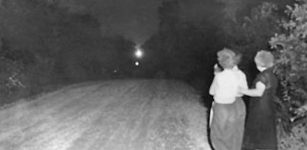Fascinating Ancient History Of Roman Shields
Rafael - AncientPages.com - Throughout history, the use of shields for battle has been present since the early civilizations. If you take a look at paintings or films depicting ancient warriors, shields were mainly used for protection in armed combat.
The shield was necessary to block and protect the user against attacks from the enemy. These attacks were usually from swords, spears, and even arrows. The earlier kinds of shields were commonly made from wood and animal hide. As time passed, these were reinforced with higher quality materials like metal, iron and steel.
Importance Of The Roman Shields
The Roman shields complete a Roman army. Without these, the legionaries would simply be walking targets out on the battlefield. If you compare the wars and battles of the past to the ones seen in movies today, you will learn just how deadly and gruesome those events were. This is the reason why Roman shields and swords have become vital pieces during their long history of warfare.
Credit: Samurai Swords
Generally, the Roman shield is among the most effective line of defense that the Roman warriors used. There were times when oval-shaped Roman shields were linked together to create a defensive barrier. This was to aid soldiers in launching their spear attacks while simultaneously repelling the enemy’s charges.
There were also instances when the shields of the entire unit were utilized to build a strong protective wall. With that, all soldiers on the frontlines crouched behind the shield while the second and third lines lifted their shields to form a roof. This was to protect themselves from any missiles firing at them.
The foulkon maneuver which has evolved from Rome allowed the entire unit to easily move closer to the enemy since soldiers were boxed and protected by the shields.
The Different Types Of Roman Shields
In ancient warfare, shields were a common tool that came in different shapes and sizes. In Ancient Rome, there were three popular kinds of shields. These were frequently utilized due to each of their specific purposes.
The Scutum
These were the more popular types of Roman shields. The scutum was large and usually came in oval or rectangular shapes; plus, these also had concave curves to provide better protection to the foot soldiers.
The shape and size of these shields allowed the warriors to further protect their bodies against enemy attacks. One of the most efficient uses of the Scutum was for battle formation and in particular the Testudo or Tortoise formation.
This shield is the only known surviving example of the examples known as a scutum. It was found at Dura Europos. Credit: Public Domain
This specific formation required soldiers to move together closely. They would align their Scutum shields before them and also above their heads. The formation would protect the entire unit from frontal assaults as well as projectile attacks from the enemy.
Although extremely effective for protection, the formation restricted any arm movement, thus, making it extremely challenging to counterattack.
The Parma
The scutum may have been perfect for the legionaries but was too massive for soldiers who were usually on horseback. Because of this, mounted warriors made use of smaller rounded shields called the Parma.
These usually measured around 36 inches or less and were often crafted out from various materials like wood, iron, and leather.
The Clipeus
The Clipeus was another well-known shield that was utilized after the 3rd century in Rome. These were commonly crafted from vertical planks that were held together using a certain type of glue.
These planks would be concealed with painted leather and were wrapped around the edges with rawhide. These were the standards shields used by Roman soldiers and were often carried by the gladiators in the arena. When it came to gladiator fights, the shields were often dressed with intricate designs to increase the spectacle of the battle.
Shields For Battle Formations
The entirety of the Roman infantry focused on certain tactics and ideas. They believed that by keeping all their soldiers in order, one could fight much better. A lot of the military commanders then had their troops rush mindlessly towards the enemy. They simply relied on skilled soldiers, large numbers, and even luck to achieve victory in battle.
Eventually, the Roman warriors realized that they cannot simply rely on such tactics. This is why they turned to utilize strategy. Each of the battles they faced were handled differently. They began considering the type of terrain, the strength of their opponents, as well as their own strength in battle.
At some point, these Roman warriors came up with battle formations to protect, as well as to attack enemy troops. They made use of a certain type of formation that was commonly utilized during battles. This was the Testudo formation.
The Testudo Formation
The Testudo formation, which was also known as the tortoise formation, was a kind of shield wall often utilized by the Roman Legions. They mostly used the formation during siege battles.
In this specific formation, soldiers would carefully align their shields to create a packet formation. This would have the shields covering the front and the top. The first row of soldiers firmly kept their shields leveled to their shins and to their eyes. This was necessary to protect the form’s front.
They were required to hold the shields this way to have a protective shield wall on every side. Soldiers at the back ranks would set their shields above their heads to shield the Testudo from above. If necessary, legionaries positioned at the rear and sides of the Testudo stood sideways or backward. They would have their shields held as front rows to protect the rear and sides of the form.
The advantage of this was that it provided consistent strength and defense against the enemy. It also offered increased protection against missile or arrow attacks. However, the disadvantage of it would be the decrease in mobility and speed of the unit.
Roman shields worked excellently for the Testudo. It allowed soldiers to shield themselves against all kinds of missiles. Troops who were immobile or on the march could possibly form this; however, the main drawback of it would be the difficulty of performing hand-to-hand combat. Since the soldiers were closely packed and were required to move simultaneously, speed had to be sacrificed, and executing attacks were tricky.
The foulkon played a vital role in the tactics used by the Byzantines against their enemies from the east. As for the Testudo, it was not an invincible formation. Claims made by Cassius Dio state that during the Battle of Carrhae, an array of Roman shields were defeated by horse archers and Parthian cataphracts.
Written by – Rafael - AncientPages.com Contributor
Copyright © AncientPages.com All rights reserved. This material may not be published, broadcast, rewritten or redistributed in whole or part without the express written permission of AncientPages.com
More From Ancient Pages
-
 Pharaoh Ay – A Man With A Hidden Agenda Or A Victim Of Unfortunate Circumstances?
Featured Stories | Feb 5, 2019
Pharaoh Ay – A Man With A Hidden Agenda Or A Victim Of Unfortunate Circumstances?
Featured Stories | Feb 5, 2019 -
 Silver Jewelry Buried In Leather Purse Discovered In Bulgaria
Archaeology | Apr 5, 2016
Silver Jewelry Buried In Leather Purse Discovered In Bulgaria
Archaeology | Apr 5, 2016 -
 Stone Age People Used Human Bones For Making Pendants
Archaeology | Jul 6, 2022
Stone Age People Used Human Bones For Making Pendants
Archaeology | Jul 6, 2022 -
 Mysterious Hornet Spook Light In Missouri
Featured Stories | Jun 26, 2024
Mysterious Hornet Spook Light In Missouri
Featured Stories | Jun 26, 2024 -
 On This Day In History: Cyrus The Great Enters Capital Of Babylon And Allows Jews Return To Their Land – On Oct 29, 539 BC
News | Oct 29, 2016
On This Day In History: Cyrus The Great Enters Capital Of Babylon And Allows Jews Return To Their Land – On Oct 29, 539 BC
News | Oct 29, 2016 -
 Where Is The Grave Of Queen Boudica?
Ancient History Facts | Aug 15, 2017
Where Is The Grave Of Queen Boudica?
Ancient History Facts | Aug 15, 2017 -
 Notre Dame Is On Fire! Can The Magnificent Cathedral Still Be Saved?
News | Apr 15, 2019
Notre Dame Is On Fire! Can The Magnificent Cathedral Still Be Saved?
News | Apr 15, 2019 -
 Exciting discoveries made by archaeologists in Laconia
News | Aug 25, 2015
Exciting discoveries made by archaeologists in Laconia
News | Aug 25, 2015 -
 Earliest Evidence Of A 260-Day Maya Calendar Found Inside Guatemalan Pyramid
Archaeology | Apr 14, 2022
Earliest Evidence Of A 260-Day Maya Calendar Found Inside Guatemalan Pyramid
Archaeology | Apr 14, 2022 -
 Shining Ones, Archimedes Death Ray And Mystery Of Vitrified Forts In Scotland
Ancient Technology | May 13, 2015
Shining Ones, Archimedes Death Ray And Mystery Of Vitrified Forts In Scotland
Ancient Technology | May 13, 2015 -
 North America’s First People May Have Arrived By Sea Ice Highway 24,000 Years Ago
Archaeology | Dec 16, 2023
North America’s First People May Have Arrived By Sea Ice Highway 24,000 Years Ago
Archaeology | Dec 16, 2023 -
 What Was Life Like For Children In Ancient Athens?
Ancient History Facts | Jul 4, 2018
What Was Life Like For Children In Ancient Athens?
Ancient History Facts | Jul 4, 2018 -
 Hazelnuts -‘Time Capsule’ To Reconstruct Landscape Of Ancient Forests In Sweden
Archaeology | Mar 5, 2024
Hazelnuts -‘Time Capsule’ To Reconstruct Landscape Of Ancient Forests In Sweden
Archaeology | Mar 5, 2024 -
 Strange Tale Of Mysterious Thousand-Year-Old Underground Network Of Caves And Encounters With Subterranean Dwellers
Ancient Mysteries | Jul 13, 2022
Strange Tale Of Mysterious Thousand-Year-Old Underground Network Of Caves And Encounters With Subterranean Dwellers
Ancient Mysteries | Jul 13, 2022 -
 Remarkable Funerary Relief Of Life-Size Couple Discovered At The Necropolis Of Porta Sarno In Pompeii
Archaeology | Apr 2, 2025
Remarkable Funerary Relief Of Life-Size Couple Discovered At The Necropolis Of Porta Sarno In Pompeii
Archaeology | Apr 2, 2025 -
 Legend Of Gyanganj – Antediluvian City Of Immortal Sages That Can Only Be Found By The Chosen Ones
Featured Stories | Jul 29, 2017
Legend Of Gyanganj – Antediluvian City Of Immortal Sages That Can Only Be Found By The Chosen Ones
Featured Stories | Jul 29, 2017 -
 Did An Ancient Supernova Force Humans To Walk Upright?
Human Beginnings | Oct 24, 2019
Did An Ancient Supernova Force Humans To Walk Upright?
Human Beginnings | Oct 24, 2019 -
 Ancient People Possessed Far Greater Knowledge Of Astronomy Than Previously Believed – Researchers Say
Archaeology | Nov 28, 2018
Ancient People Possessed Far Greater Knowledge Of Astronomy Than Previously Believed – Researchers Say
Archaeology | Nov 28, 2018 -
 Remains at Crenshaw Site Are Local, Ancestors Of Caddo – New Study
Archaeology | Jun 15, 2023
Remains at Crenshaw Site Are Local, Ancestors Of Caddo – New Study
Archaeology | Jun 15, 2023 -
 Impressive Marble Statue Of A Ram, An Ancient Christian Symbol For Jesus Discovered
Ancient Symbols | Dec 28, 2015
Impressive Marble Statue Of A Ram, An Ancient Christian Symbol For Jesus Discovered
Ancient Symbols | Dec 28, 2015



